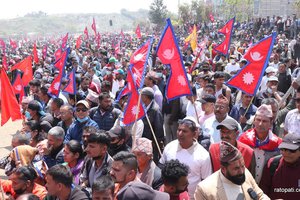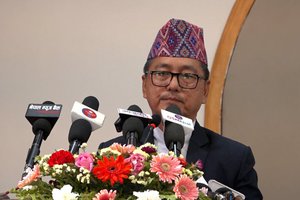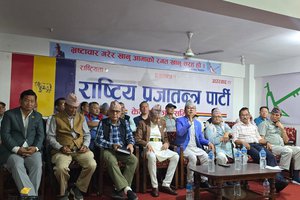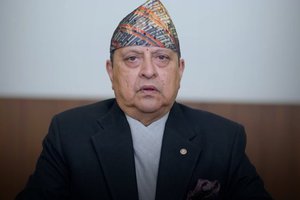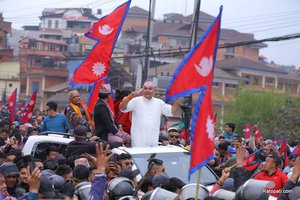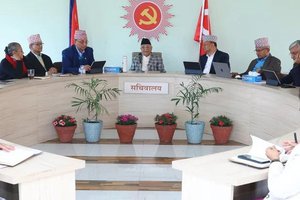Politics

UML POLITCIS: Oli Vs Bhandari
As Prime Minister KP Sharma Oli is facing major hostilities from ruling alliance Nepali Congress, foremer presient Bidhya Bhandari is challenging the leadership of Oli in CPN-UML. Who will win the battle in the UML will fix Nepali politics for future
By A Correspondent Apr 29, 2025
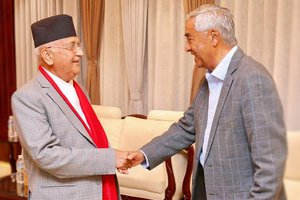
NC-UML COALITION: In Turmoil
With growing pressure from top brass of Nepali Congress, UML-NC coalition government has shaken badly. NC leaders are expressing anger over the one sided controversial decision taken by the government. Although Prime Minister KP Sharma Oli and Nepali Congress leader Sher Bahadur Deuba, who are facing hostile scenario in internal politics, sat to narrow down the differences, hardnning stand of NC leaders put the government in uncertain course
By A Correspondent Apr 27, 2025
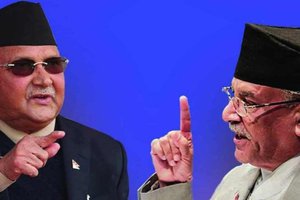
POLITCS: Do Or Die
The political landscape in Nepal is currently marked by intense rivalry, particularly between the CPN-UML leader KP Sharma Oli and Maoist Center leader Pushpa Kamal Dahal Prachanda, who was ousted from power in a sudden manner. Prachanda is now pursuing a strategy aimed at political retribution. In response, Prime Minister Oli and the CPN-UML have adopted a more aggressive stance, accusing Prachanda of engaging in corrupt practices. This visible conflict between the two dominant communist factions is likely to lead Nepal's political environment into a state of uncertainty. Prachanda has issued warnings regarding the potential for political unrest reminiscent of the turmoil seen in Bangladesh.
By Keshab Poudel Sep 13, 2024
Latest Updates
- Tik Talker Rama Basnet released on bail of Rs 30,000
- 4 days, 18 hours ago
- PM Oli Urges Evey to Make Yoga a Daily Life
- 1 week, 2 days ago
- Neal’s First Flyover Construction Completed
- 1 week, 4 days ago
- Court Orders Two Important Order in Favor of Press Freedom
- 1 week, 4 days ago
- Ministry of Foreign Affairs issued A Travel Advisory for the Middle East
- 1 week, 5 days ago
- Government Has Started The Implemenation of Resolution of Sagarmatha Sambad: Minister Shahi
- 1 week, 6 days ago
- Journalist Pathak files writ petition in High Court against arrest warrant
- 2 weeks ago
- Parliament was run in a tyrannical manner: Gyanendra Shahi
- 2 weeks, 1 day ago
- Nagrik-Arju Dispute: She Says - 'I Spoke With Shobha Gyawali, I Am Surprised To See Reaction That I threatened'
- 2 weeks, 3 days ago
- Durga Prasai remanded in custody, 32 released on bail in
- 2 weeks, 4 days ago
